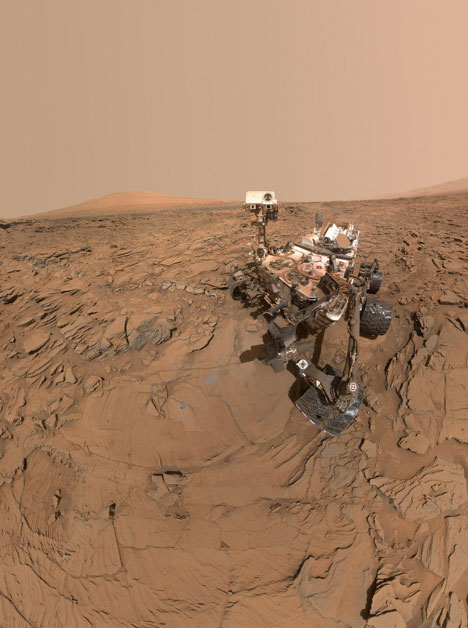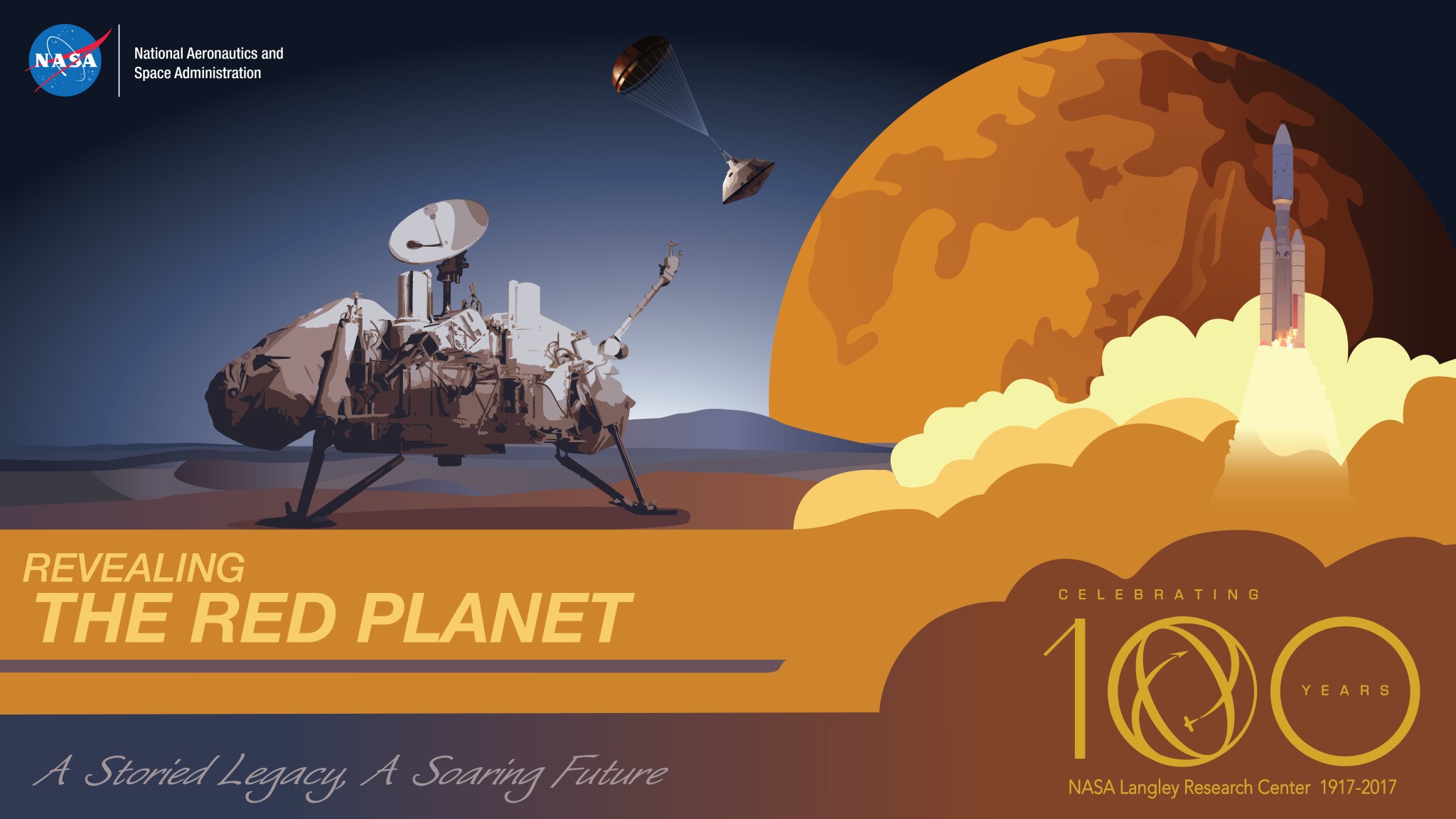A tiny, rusty pinpoint in the night sky, Mars beckons the human imagination. Just around the interplanetary corner, could a seemingly dead world harbor life? Did it ever? What happened to its atmosphere, its shallow oceans, its meandering rivers and streams?
Answering such questions has been justification enough to spur Martian exploration. Yet beyond unexpected and thrilling discovery, prepping for successful Mars sojourns also has down-to-Earth benefits: technology development that can be directly applied terrestrially. Ultimately, such innovation could be used to establish a permanent human presence beyond the home planet.
Langley is helping to unmask Martian mysteries: how a warmer, wetter world in eons past has today become cold, arid and seemingly biologically hostile. But discovery is always prefaced by the sheer challenge of grueling space travel. In the case of Mars it was how to help landers touch down safely after a journey lasting many months. That hurdle was cleared: To date, Langley has been involved in seven Mars missions, with participation in more likely to come.

Viking Sets Sail
Langley’s initial Martian claim to fame came in 1968, when it was tapped by NASA to lead Project Viking, humankind’s first-ever successful landing on Mars. Two identical spacecraft, each consisting of a lander and an orbiter, were built. Each orbiter-lander pair flew together and entered Mars orbit; the landers then separated and descended to the planet’s surface. The Viking 1 lander touched down on July 10, 1976 –– while the Viking 2 lander arrived less than two months later, on Sept. 3.
Besides taking photographs and collecting other science data, the two landers conducted three biology experiments looking for possible signs of life. Although unexpected and enigmatic chemical activity in the Martian soil was detected, no clear evidence of living microorganisms was unearthed. Viking Orbiter 1 continued for four years and 1,489 orbits of Mars, concluding its mission Aug. 7, 1980, while Viking Orbiter 2 functioned until July 25, 1978.
Recent Mars
Perhaps none of the Langley-involved Mars missions was as nerve-wracking as the landing of the Mars Science Laboratory (MSL) mission’s Curiosity rover, the most technologically advanced ever built. Researchers coined the phrase “seven minutes of terror,” referring to the time of MSL transition through the Martian atmosphere to the surface, not knowing if a unique series of never-before-attempted complicated landing maneuvers would succeed. The answer was a resounding “Yes!” as Curiosity was delivered without incident to Mars’ Gale Crater the evening of Aug. 5, 2012 Pacific Daylight Time.
Langley played a central role in Curiosity’s success, with a Langley team conducting millions of computer simulations to profile the many variables affecting MSL Mars touchdown. Langley researchers also designed and developed a set of sensors called MEDLI, short for MSL Entry, Descent and Landing Instrumentation, sensors intended to make Mars entry systems safer, more reliable and lighter.

Earth-Independent?
If Earth’s citizens are ever to become a multi-planet species, Mars seems a likely candidate. Although a work of fiction, the 2015 film “The Martian” imagines regular Red Planet human exploration, and features real-world NASA technology front and center. Plucky astronaut-botanist Mark Watney, played by actor Matt Damon, uses a full array of NASA gear at his disposal to survive. Potential colonists would have to do the same.
A case in point is Langley’s proposed concept called “Mars Ice Home,” a large inflatable torus, similar to an inner tube, surrounded by a shell of water ice. Lightweight, easily transportable and deployed with simple robotics, the torus could be filled with water before a crew arrives. It incorporates materials locally; Ice Home water might potentially be converted to rocket fuel for a Mars ascent vehicle, with the structure itself doubling as a storage tank that could be refilled for the next crew.
Langley has also tested NASA’s Hypersonic Inflatable Aerodynamic Decelerator, or HIAD, a lighter-weight heat shield that uses entry, descent and landing technology to slow and protect spacecraft as they pass through planetary atmospheres. For a Mars mission, the weight savings could translate to larger, heavier scientific instruments and additional tools for exploration.
More NASA robotic missions beckon, with the Mars 2020 mission building upon the MSL rover findings. Further on, perhaps by the 2030s, astronauts will set foot on Martian soil for the first time. If history is any guide, Langley will be enlisted to make what was once considered science fiction into science fact.



























